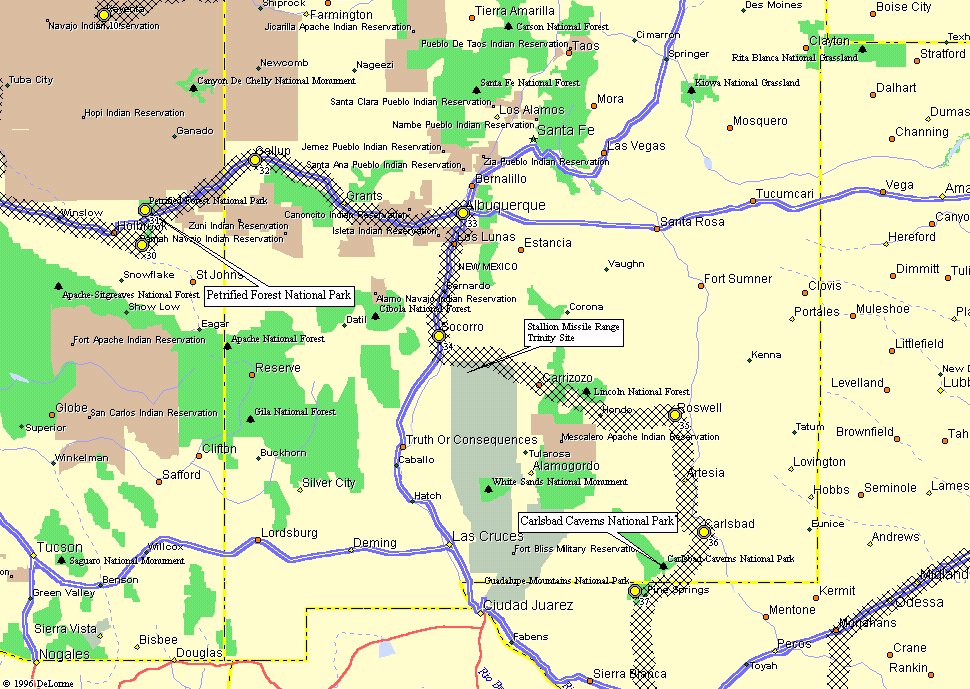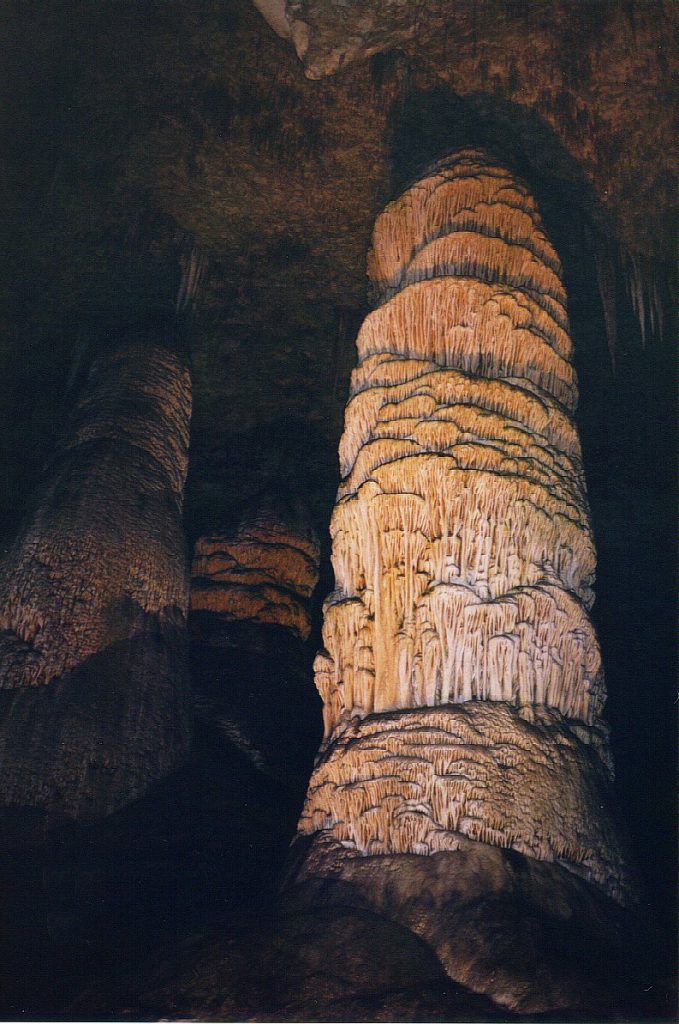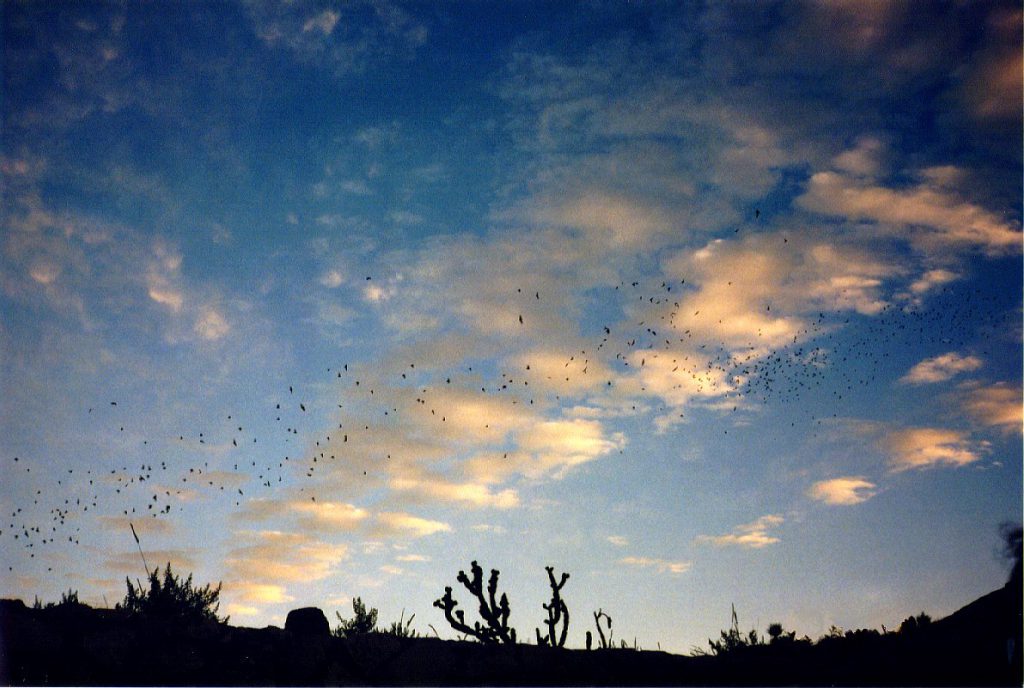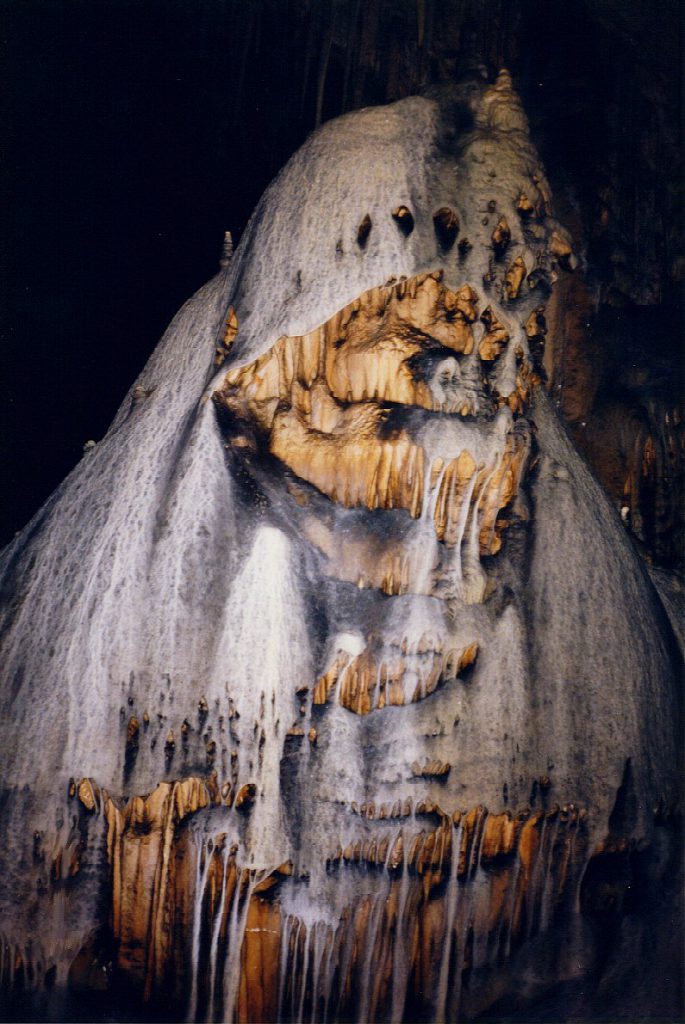Carlsbad Cavern is a wet cave. That is, the features that you will find in the cave are created by water dripping from the roof of the cave onto the floor. The cavern itself is very large and was created by the dissolution of limestone at a period when the rock was underwater. In fact, the rock shelf that contains the caverns is the site of a very ancient reef that was completely undersea at the time of the rock (limestone) formation.
Carlsbad is very highly developed, lights are carefully placed to provide some amazing effects and thus you don’t need a flashlight — but you do need a flash camera (which due to the size of the cavern doesn’t do much good either). You can descend into the cave via the natural entrance or by elevator. Normally you take the elevator out unless you can obtain special permission to ascend the entrance. It is quite a vigorous climb, but they will allow you to do it if you can demonstrate the ability — for us, it was the fact that we had descended and ascended the trails into the Grand Canyon that got us permission to do it. Aside from the exercise there was little added value — you don’t see any more going up than you would going down!
Nearby, there is a smaller less travelled cave called Slaughter Canyon cave. The cave is not developed at all, save for some slight trail building, and is much more interesting for cave enthusiasts. However, there are no lights at all so, if you don’t like caves or other dank, dark, slippery and close places, don’t go! The cave is wet and has some particularly fascinating formations.



